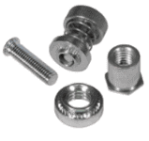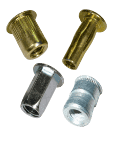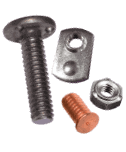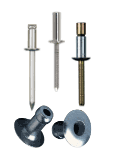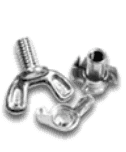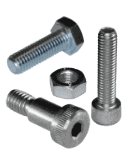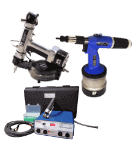Self Clinching Studs – Quality Fasteners for Load Bearing Applications
January 5, 2022
Press fit and clinch style self clinching studs are light to medium fastening products manufactured for applications required to withstand low to moderate levels of torque. Our Captive Fastener® brand self-clinching studs are the equivalent to PEM® Studs in form fit and function, and when installed, are designed to become a permanent fixture of the part, component, or device onto which it’s installed.How Do Self Clinching Studs Work?
Self clinching fasteners work by utilizing a unique clinch feature. When the part is pressed into the hole, the parent material is displaced and cold-flows into the clinch feature, effectively locking the fastener into the panel, providing excellent torque-out and push-out performance. Some example of press fit studs include:- Flush head studs
- Close to the edge studs
- Studs for stainless steel
- High torque studs (for heavier duty applications)
- Large head high torque studs
- Studs for thin material
Self Clinching Stud Installation Process
When installing a self-clinching stud, specific tolerances must be met. The most important factors to consider when installing self clinch studs are the sheet metal framework's ductility, thickness, and hardness. A cold flow process between the chassis material and the fastener material causes the chassis metal to wrap around the clinch profile of the stud, securing it and locking the fastener in place. Using a material that is too thin or too hard will prevent the self-clinching process from working correctly.Steps in the Installation of Self Clinching Studs
Utilize the following steps for proper installation of your self clinching press fit studsStep 1
Select the appropriate hole size for the stud size required. Punch or laser cut the hole diameter into the sheet material and place the material on top of the proper anvil.
Step 2
Place the stud so that the head serrations rest on the parent material. If the hole is punched, please be sure to insert the stud through the punch side and not the die side. If placed in the die side, the fasteners may not clinch properly due to a lack of material. Ensure both plate and stud are aligned along the same axis. If not, the joint will be imperfect, and mating threads will misalign.
Step 3
Using a flat-faced profiled punch, apply only sufficient pressure to ‘squeeze’ the stud head and its under head tooth features into the parent sheet metal.
Step 4
The tooth locking feature will provide torsional (rotational) resistance if properly installed. After installation, the head of the stud should be flush with the sheet metal when using a flush head style stud.
How to Select the Correct Self Clinch Stud
Press fit self-clinching studs are available in various sizes, strengths, and styles based on your application requirements. Choosing the correct self-clinch stud for your project will depend on several factors, some of which include:- Application
- Attached panel material
- Components that will be attached to the stud



